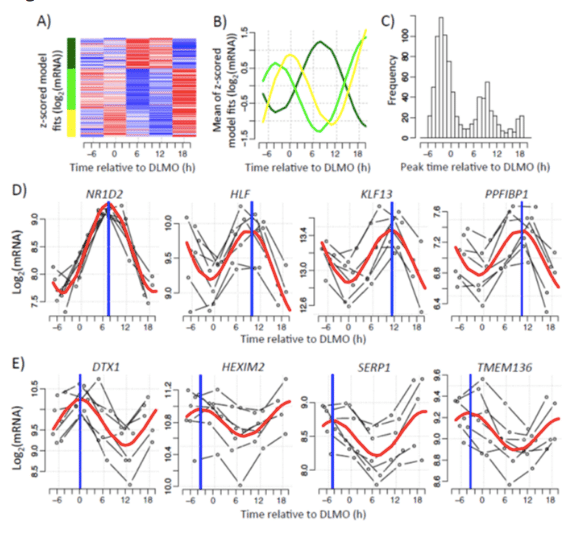The Circadian Rhythm of Fat Cells
In PCOS, fat cell dysfunction is a major, integral part of inflammation and insulin resistance. Interestingly, a new study is the first to discover circadian rhythms in human fat cells. In simplest terms, this means that our metabolism changes over the course of the day, as well as during the night.
Participants with relatively normal circadian rhythms were chosen for the study. First, they underwent some restrictions for 10 days in order to keep their routines and meals regulated.
Then, over the course of the next three days, their sleep and meal times were regulated in cycles.
Finally, the participants were placed in a 37 hour “constant” routine. This involved no changes in light/dark, feed/fast, and sleep/wake cycles. Daylight and temperature were strictly controlled, and food was evenly distributed to rule out any other impacts on the fat cells’ metabolism.
The researchers biopsied the fat cells every 6 hours, and measured the gene expression to figure out how functions changed throughout the day. They discovered that there were clear differences in the fat cells in the morning.
Gene expression independent of light and feeding happened at specific times of the day, showing that the time of day itself matters when it comes to fat cell activity.

Differences in Daytime VS Nighttime
During the night, fat cells performed antioxidant actions and metabolized organic acids and breaking down fat (lipolysis) [1]
In contrast, during the daytime, fat cells were more involved in active function. This included regulating gene expression and nucleic acid binding. Morning genes in fat cells work on the deeper functions in our DNA: namely transcription and translation.
Since fat cells aren’t just a storage organ, they’re an active hormonal tissue. As such, they control appetite and metabolism, and have their own independent rhythms based on time.
As we can see, we’re learning more and more about cellular function. Furthermore, we see how lifestyle elements such as fasting, food intake timing, sleep, and time of day can have deep impacts on our cellular health.
Tips To Optimize Circadian Rhythm
Blue Light Signals “Day” to our Brains – Block it at Night!
- In the evening use lamps instead of bright overhead lighting
- Avoid devices at night, or wear “blue blocker” glasses.
- Wear an eye mask while sleeping
Apps that can block blue light from devices:
- “Flux” app for computers
- “NightShift” for iPhone
Time-Restricted Feeding (Gentle Intermittent Fasting)
- Keep daily eating window to 12 hours or less
- Stop eating by 7pm, ideally
An optimal eating window is earlier in the day rather than later – insulin sensitivity is at it’s best in the morning. - Eat during the daytime hours
Get Bright Light During Daytime Hours
- 30 minutes minimum outdoors, preferably in the morning.
- A “Happy Light” will also work indoors (10,000 Lux).
References:
- Circadian regulation in human white adipose tissue revealed by transcriptome and metabolic network analysis. Scientific Reports, 9(1), 2641. https://doi.org/10.1038/s41598-019-39668-3 Christou, S., Wehrens, S. M. T., Isherwood, C., Möller-Levet, C. S., Wu, H., Revell, V. L., … Johnston, J. D. (2019).





